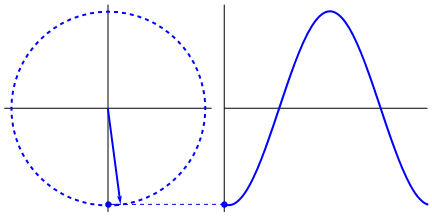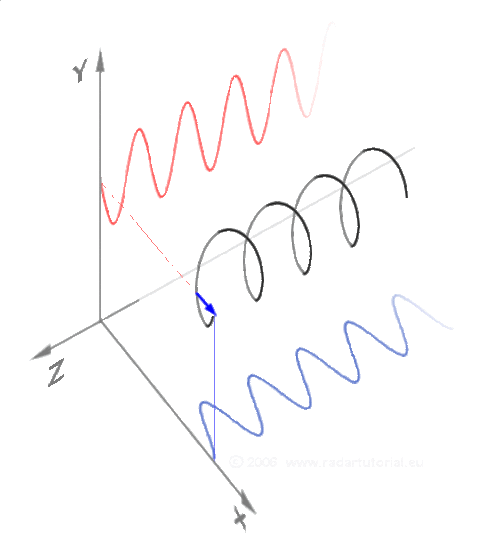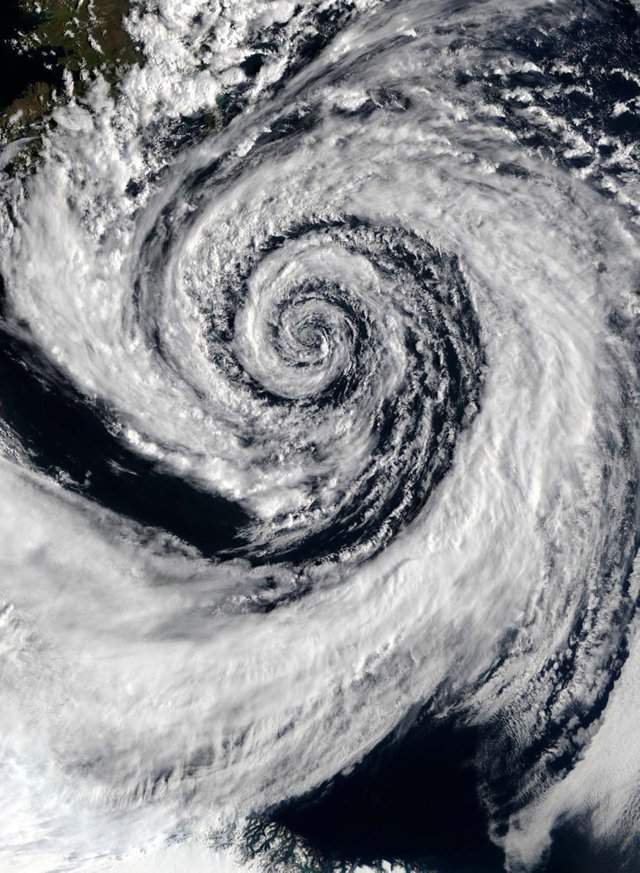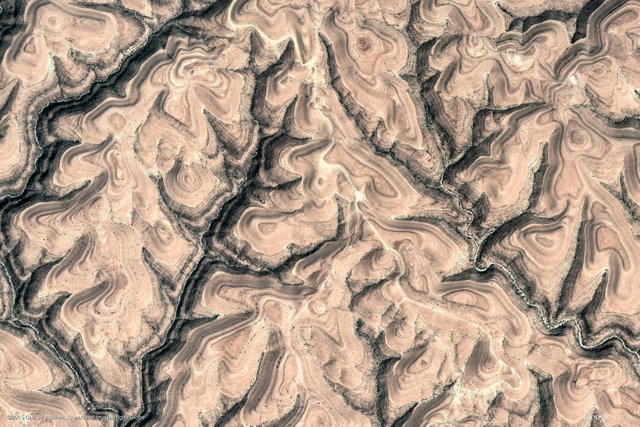There’s no brief way for me to explain my scale perspective well.
The target area of effect is all of infinity in the entire universe.
(Universe is Greek for “One Turn” by the way.)
On a day to day basis, usually I focus on tiny backyard micro-climates, or the social situations of individual houses. I try to keep the overarching politics of Portland in the back of my mind all the time, but that’s really challenging because it changes from day to day, and in many ways is antithetical to the other work I’m doing… And then I also keep a pretty close eye on the climate conditions of the North American continent, and the globe, daily.
I also glance occasionally at things that are going on across the globe, in places like Syria, or Venezuela, because there are a number of trigger events that usually signal economic or social changes in advance of the general populace being affected.
In order to recognize and predict changes like that, you have to have a fairly clear picture of the threads that connect all these seemingly disparate elements.
Something I usually refer to as “the map.”
The Map Of Infinite Space And Time! Woo!
There’s a lot of intuition and irrationality in my process, and what I call “holistic navigation” - because it sounds a lot more professional than “winging it” or “flying by the seat of my pants.”
In the good old days of aviation, if you were flying at night and your fancy instruments went out, the only way you could tell if you were right side up was by the feeling of your ass in the seat.
I think it’s fair to say that the instruments have failed and our society is flying blind.
Better to navigate by intuition than malfunctioning equipment.
Usually I don’t try to dive into this in text format, because it takes several hours and a whiteboard or some sidewalk chalk to properly explain it, but I’m going to take a whack at it anyway.
Rationality and irrationality are related to scale perspective.
So what is rational for an individual human that lives one lifetime,
Is irrational for say, any one part of a collective consciousness that goes on forever.
Rationality is synonymous with proportionality, but we are divorced from damn near every process in nature that can give us a true perspective of proportion, or real value.
Also, like with ethics, if you’re not constantly calculating and evaluating the ratios, you’re bound to wander off into the deep darkness.
Sometimes that’s the destination.
I’ve been to some deep darkness, and stayed there long enough for my eyes to adjust to the dim, that’s one of the reasons why I’ve seen things that other people haven’t.
Scary, dangerous things, that it is unwise to talk about at parties (unless you WANT people to think you’re nuts and/or tactfully evade being taken seriously by anyone with a degree.)
The reason why everything is such a mess is because the mechanism of information transmission is broken. We live in the age of spin; everything is bullshit, facts are dead, and research ends at Snopes, if it even gets that fucking far.
Most people don’t understand consciousness or the universe, and they’re not trying to.
They’ve settled into a delusion I call “The Rectangle Program.”
We crave familiar patterns, and nothing could be more familiar to an American than a rectangular room in a rectangular house, outlined by a rectangular lawn on a rectangular city block, surrounded by a rectangular street grid and rectangular agriculture.
Maybe even in a rectangular state, fuck it, go for broke, Wyoming.
Rectangles are the easiest to calculate with linear systems design.
Which might be great except, nature is nonlinear.
All of it.
All the time.
Everything in nature, animate or inanimate, follows the path of least resistance.
That path is never a straight line, therefore any straight line cuts through the landscape and interrupts the flow of energy – materials – resources – waterways – migration paths – etc.
Any straight line creates unnecessary resistance and wears out quicker,
That which is against Tao cannot last long.
The way we design cities is a disease. I think of it as skin cancer at the planetary scale.
I hope my housing design doesn’t suggest that hexagons are a magical one size fits all solution, but in this specific case and with the intended site, they bridge the gap between the linear dynamics of construction and measurement, and the nonlinear mechanics of natural systems they’re meant to integrate with. It’s one non stupid way to do it, and I only know that because I stole the design from bees.
There are two shapes, however, that are “one size fits all.”
Circles and spirals.
The things that are HARDEST to calculate with conventional measurement and physics,
Are the most common in nature, at all levels of scale.
All circles have a ratio of pi between their radius and circumference,
And spirals from natural accumulative growth, have a growth ratio of phi.
That’s not a happy accident, or a mistake.
It is the foundation of all structure we observe at every level of scale in the entire universe.




Cancer Cell Division

Anglerfish Ovary

Snail Shell Cross Section

Fern

Hurricane

Galaxy
So, why these ratios, and what is the path of least resistance?
We still have a geocentric philosophy of the universe – Earth is at the center of creation.
The standard model relies on the Newtonian principle of “inert” or “rest mass.”
Inert. Stationary. Motionless.
When we calculate things like the speed of light, we assume our velocity to be zero.
Our velocity is certainly not zero, and in my model energy cannot have mass without velocity, which is supported by relativity even though I have strong disagreements with that model.
There is no evidence of a stationary object.
An object at rest might tend to stay at rest until acted on by an outside force,
Except I’ve never observed an object at rest. Neither has anyone else. Ever.
So that’s the first law of motion crossed off the list.
The second law is pretty good – an object in motion changes its velocity relative to outside forces. True enough.
But then the third law goes off the rails again:
“For every action, there is an equal and opposite reaction.”
So, my action is to push on this door, with twenty newtons of force.
An equal and opposite reaction would the door pushing back with twenty newtons of force,
And remaining stationary.
This is a set of laws of physics that demand the universe to be stationary and motionless.
So it’s no surprise that CERN said, “The Universe Should Not Actually Exist.”
Well, obviously it does, so, they’re fucking wrong.
And with all that money so well spent, they’re unable to admit they might ever be even slightly incorrect, so instead their conclusion is that THE ENTIRE UNIVERSE IS WRONG.
“Not me.
I can’t be wrong.
God must have fucked up.”
If instead, we work from the assumption that the universe DOES exist,
Then in order for mass and energy to behave as we observe,
There must be some critical organizing component.
VECTOR AND VELOCITY
Once we acknowledge that we’re moving through space, to find the path of least resistance we need to know our path. And to find out what time it is we need to know our speed. I can tell you both. Just try not to freak out 😉
Our speed is 299,792,458 meters per second, or about 670,616,629 miles per hour.
More commonly called light speed.
Scientific American will tell you that “…the surface of the earth at the equator moves at a speed of 460 meters per second–or roughly 1,000 miles per hour. As schoolchildren, we learn that the earth is moving about our sun in a very nearly circular orbit. It covers this route at a speed of nearly 30 kilometers per second, or 67,000 miles per hour.”
That is incorrect, because the sun is not stationary. It is orbiting the center of the galaxy.
The galaxy is not stationary either, but from our position we can’t easily tell which way it’s going or how fast.
So, when I say that light speed is zero, I don’t mean light is motionless as such –
I mean it’s like the ocean’s speed is zero.
It stays right at the coast.
It’s always right where you left it, because all the water already rolled down to the bottom of the hill. Obviously it’s not static, waves move around in it, but if you’re in a boat the only way to tell how fast you’re going is by the water washing over your hull.
We are hurtling through an ocean of light.
Chaos is Greek for void,
But there is no void, no vacuum, no empty space.
Every part is structured, every part has a pattern.
The way we move through space generates the geometry of existence,
And our experience of time.
THE OBSERVER
Descartes said the one thing we cannot doubt is that we are having an experience.
Consciousness gives rise to perception, and our mode of perception dictates what type of universe we observe.
The observer is a big pain in the ass for modern science.
They can’t really explain it away, so they do their best to shove it under the rug,
Because with nothing but subjective observers to gather data, there can be no objectivity, which is supposed to be the goal of science: to reach objective conclusions.
Perhaps it is just that none of these scientists have ever taken hallucinogens, so they are very confident in the accuracy of their observational equipment, and do not realize how malleable their view of reality is. It only takes one opportunity to alter your brain chemistry, to see how much of the form and function of reality is being generated by your brain, that is… All of it.
This is where we get to the crux of objectivity,
How does the brain generate reality?
And why are certain geometries scale invariant?
First off,
How many dimensions are we perceiving?
The usual assumption is that we visually perceive three dimensions.
We do not. We visually perceive two dimensions, from two positions.
Each eyeball sees a flat picture of the world, and forms a parallax triangle with the other eye.
That enables the brain to interpret the variance between each eye as depth.
But depth, the third dimension, is an illusion created by the mind.
I’m not suggesting the world is less than 3d, just that our perception is limited.
Which is part of the reason why we can’t literally “see” the fourth dimension: time.
So you might say a 3d object at rest tends to stay at rest, because it needs a fourth dimension in order to have motion. Linear Cartesian coordinate systems can’t handle this very well, so we’ve come up with lots of clever workarounds to make it appear as if linear time is passing.
But time is fuckin’ weird.
It’s not linear.
It’s radial.
And I can prove it with a simple thought experiment:
When you look out at the stars, hundreds or thousands or millions of “light-years” away, you see ancient light. The star you’re seeing is very literally in the past, and at the present moment, some of the stars you’re looking at have exploded.
The farther out you look, the farther back in the past are the objects you’re seeing.
So we have a model just for that, called astrophysics.
Quantum physics has a different assignment. Looking farther and farther “in.”
And they disagree wildly with astrophysics, because their observations don’t match at all.
When they look in at distant, tiny interactions, they see a hazy probability field that is quite unpredictable, with two key points:
The solution doesn’t resolve UNTIL you observe it, and more importantly,
The laws of causality don’t work right. Effects precede their causes.
Time is backwards.
The reason why it’s backwards is because,
If looking out is the past,
Looking in is the future.
Quantum events cannot be accurately calculated because
THEY HAVEN’T HAPPENED YET.
Somewhere in between there’s an event horizon, the scale at which we are observing the present, which gives rise to this weird mechanic we call singularity.
Hopefully you haven’t already been inundated with all the related garbage, or this may seem patronizing.
Singularity is the thing that’s supposedly driving black holes, and in conventional physics, the “event horizon” is the point at which the laws of physics break down and our mathematics fail to calculate accurate outcomes, because everything goes to infinity. In order for the effects we observe to be generated, the system requires infinite energy.
And we don’t know how to calculate infinity.
Bear in mind that singularity itself means “the state, fact, quality, or condition of being singular.”
As well as “a point at which a function takes an infinite value, especially in space-time when matter is infinitely dense, as at the center of a black hole.”
In order for there to be a singularity, there can only be one thing.
If the singularity is infinite, then logically there is only one thing our universe:
Everything else must be derived from that.
But that doesn’t make sense, because you see lots of different things.
Lots and lots of stars. Enough to fill up the whole night sky.
So if there’s only one star, why do you see so many?
Feedback.
There’s an experiment you can do yourself, fairly easily.
Using any digital camera that you can send live video out from,
Hook the camera up to a tv or monitor, and point the camera at the monitor.
This is especially easy if you have an oldschool usb webcam.
There are numerous examples you can find online, but it’s more magical if you do it yourself, especially because you can clearly see that every little twitch and adjustment sends a ripple through infinity. Most feedback experiments you’ll find generate a spiral, because there’s a single viewport – one lens and one screen:
But that’s not how we observe reality. We have two viewports and one screen, so we observe a lot of other geometry you won’t find that way – but if you apply a mirror effect that splits the output in two, that generates the types of structures we see in nature.
Here’s an example I made a while back; pardon the whining of my laptop’s fan:
We’re still just looking at a 2-d cross section,
But that’s how you get these fun shapes:



The thing you’re looking at is the thing you’re looking with.


The inside is the outside.



Upside down and inside out.
Neurons Versus Cities At Night:



Mathematics gets hung up on infinity, because we use linear math, and you can’t calculate an infinitely long straight line. I assume that infinity seems daunting to you as well, because any explanation you’ve ever heard of it either made no sense, or was clearly impossible.
It sounds challenging, right?
Except you’ve been looking at infinity your entire life.
You’re so used to infinity you probably don’t even notice it.
Each tree has the ability to make infinitely more self similar trees,
But that’s not obvious,
Because it’s infinite over time, not in 3-d space.
Here’s a more concrete physical example: Euler’s Disk.
As the rotation frequency “goes to infinity” the velocity goes to zero,
And the object becomes stationary (relative to the observer.)
Eventually the rotations become so frequent that all the positions are occupied simultaneously, making for a nice solid object. But there are two infinities in mathematics; small infinity and big infinity. One of them is reductive, as you can infinitely divide one into smaller fractions forever. The other is additive, since you can infinitely add more numbers to the number line.
Either way, when you get there, the answer is zero.
Imagine that disk going towards the other infinity; instead of spinning down, losing velocity, imagine you could keep adding velocity… So that it stands on end, and with each revolution, it more closely resembles a solid sphere… Until eventually the disk occupies all points in the space simultaneously, and actually becomes a solid object.
I know that’s a tall order… But this is also the manner in which an atom can (in theory) be 99.99999% empty space and still behave as a solid object.
Back to the standard model for a moment; as I mentioned we have to take a system that’s moving and freeze it in time to calculate using conventional methods. But we have to warp it in other ways too, we have to make it into a “closed system.”
“In nonrelativistic classical mechanics, a closed system is a physical system that doesn’t exchange any matter with its surroundings, and isn’t subject to any net force whose source is external to the system. A closed system in classical mechanics would be considered an isolated system in thermodynamics.”
Do me a favor, and point to a physical system that doesn’t exchange any matter with its surroundings, and isn’t subject to external forces.
I’ll wait.
Any luck?
Probably not.
There are no closed systems in the universe.
There aren’t even any closed systems in labs, even though we try real hard to close them. We’ve done our very best to evacuate every last atom from a space, and the closest we’ve ever come to true vacuum still contains enough energy to power a million suns.
We assume that atom is spinning in a frictionless vacuum, which is why it keeps spinning, in spite of not receiving or exchanging energy with surrounding systems. Not that something is causing it to spin continuously forever, but that it and everything else will eventually wind down to the inevitable heat death of the entire universe.
So when you take an object moving through space and time, interacting with its surroundings, cut it off from all that and try to measure it independent of both the universe AND the observer, it’s no wonder the universe appears broken.
Does that sound rational?
science (n.)
mid-14c., “what is known, knowledge (of something) acquired by study; information;” also “assurance of knowledge, certitude, certainty,” from Old French science “knowledge, learning, application; corpus of human knowledge” (12c.), from Latin scientia “knowledge, a knowing; expertness,” from sciens (genitive scientis) “intelligent, skilled,” present participle of scire “to know,” probably originally “to separate one thing from another, to distinguish,” related to scindere “to cut, divide,” from PIE root *skei- “to cut, split” (source also of Greek skhizein “to split, rend, cleave,” Gothic skaidan, Old English sceadan “to divide, separate”).
If you have to cut the universe into pieces to “know” it,
The result is cosmic vivisection.
Cutting open the living universe so we can poke it with instruments.
And if there is only "one thing," "singularity," then you have to cut it, to create ratios.
The way you cut the space can be arbitrary, you can make it all into rectangles and lines,
But you can also clearly see the way nature divides space.
The only math we have for that? Irrational numbers.
Beyond the rational, in an imaginary la-la land of fractal geometry, which is the only thing that’s ever made sense to me.
If physics has never made sense to you before,
There’s a good chance that’s because it doesn’t make sense.
Imaginary numbers aren’t special, because all numbers are imaginary.
We just made it all up out of nothing, so we can do whatever we want with it.
When you start playing with the system, patterns emerge,
Patterns that make sense.
But if you follow the rules, math is very dull.
Geometry, on the other hand, “the measure of the Earth,” is fascinating because it’s not arbitrary.
The Earth has patterns, and rules, and when you apply math to them, and it doesn’t quite work,
That’s because you’re doing the math wrong.





We can’t make these kinds of structures using linear, rational mathematics, or even measure them accurately!
Cool beans, I've had many of these same thoughts.
https://www.inkitt.com/stories/scifi/14700
https://steemit.com/spirituality/@alexbeyman/what-the-message-was-for-me
https://steemit.com/spirituality/@alexbeyman/omega-point-the-meaning-of-life
Downvoting a post can decrease pending rewards and make it less visible. Common reasons:
Submit
If there's anything you disagree with or can expand on, I'm always happy to have more feedback.
Downvoting a post can decrease pending rewards and make it less visible. Common reasons:
Submit